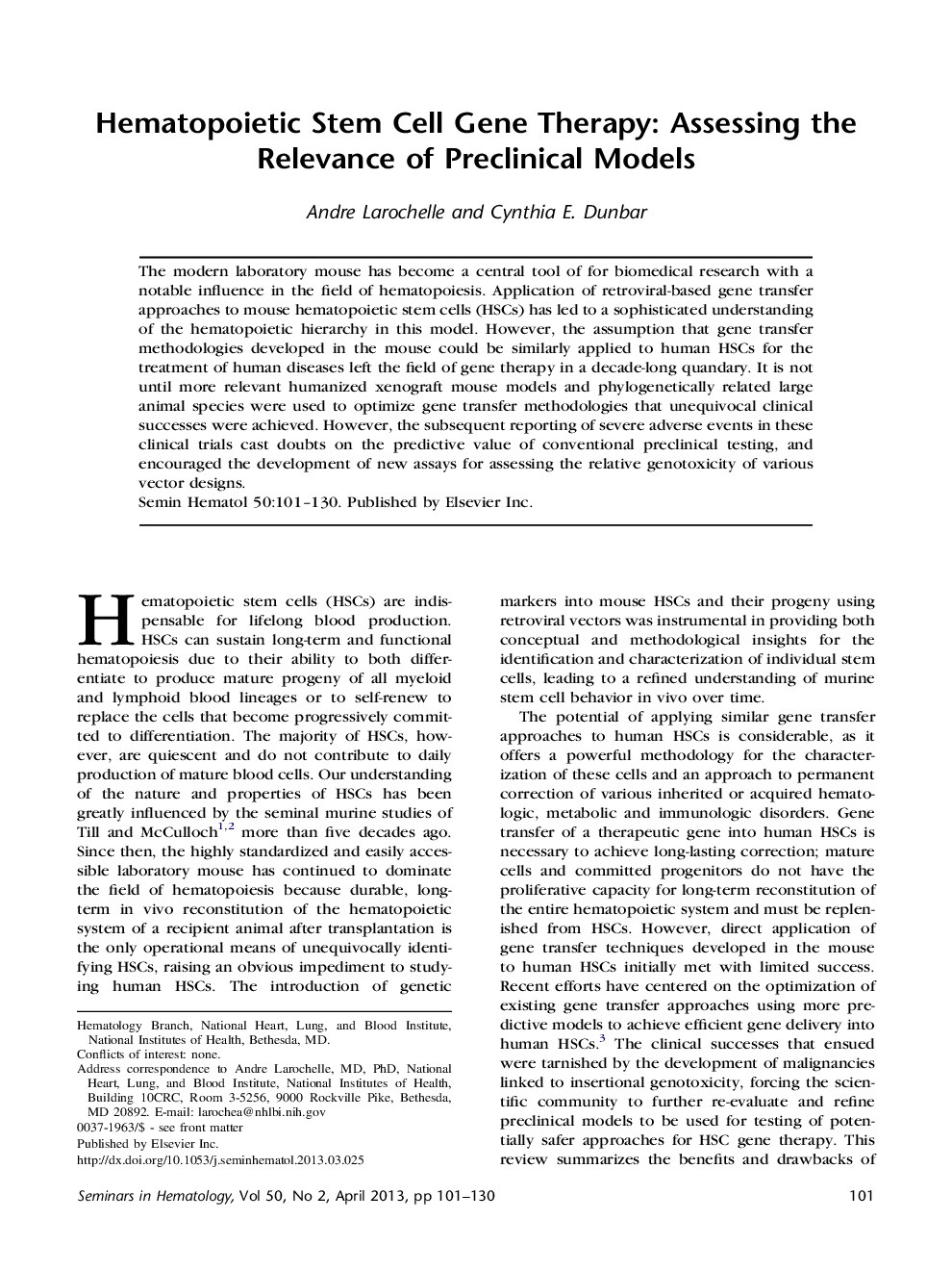| Article ID | Journal | Published Year | Pages | File Type |
|---|---|---|---|---|
| 6113781 | Seminars in Hematology | 2013 | 30 Pages |
Abstract
The modern laboratory mouse has become a central tool of for biomedical research with a notable influence in the field of hematopoiesis. Application of retroviral-based gene transfer approaches to mouse hematopoietic stem cells (HSCs) has led to a sophisticated understanding of the hematopoietic hierarchy in this model. However, the assumption that gene transfer methodologies developed in the mouse could be similarly applied to human HSCs for the treatment of human diseases left the field of gene therapy in a decade-long quandary. It is not until more relevant humanized xenograft mouse models and phylogenetically related large animal species were used to optimize gene transfer methodologies that unequivocal clinical successes were achieved. However, the subsequent reporting of severe adverse events in these clinical trials cast doubts on the predictive value of conventional preclinical testing, and encouraged the development of new assays for assessing the relative genotoxicity of various vector designs.
Related Topics
Health Sciences
Medicine and Dentistry
Hematology
Authors
Andre Larochelle, Cynthia E. Dunbar,
